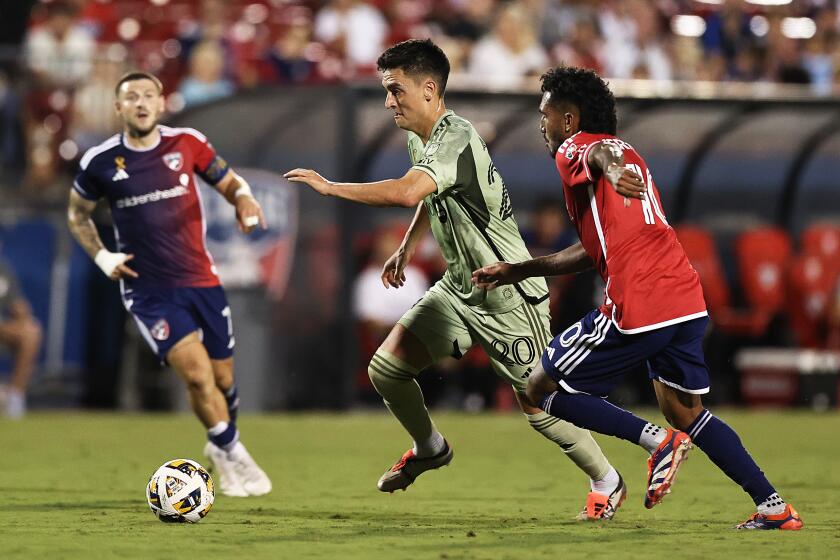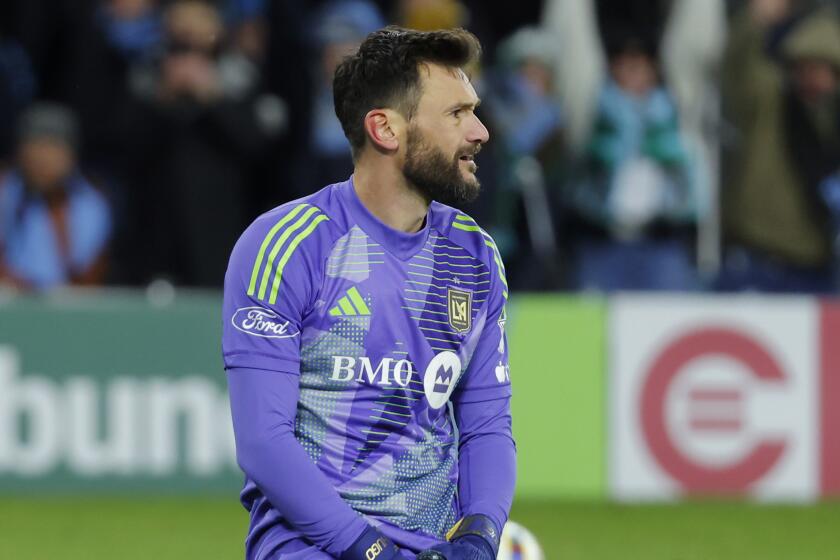How Canada’s men are on verge of qualifying for World Cup

If Canada makes the World Cup and the U.S. does not, the blame — or credit, depending on your point of view — could go to Don Garber, the commissioner who 14 years ago brought MLS to Toronto.
At least that’s how Duane Rollins sees it. Since few people know more about Canadian soccer than the 44-year-old writer and podcaster from Toronto, let’s go with him.
“The most significant tipping point in Canadian soccer was 2007 when MLS came to the country,” he said. “It sort of professionalized the entire system. Academies started to pop up.”
That ended a period Rollins calls “the dark years” and brought Canadian soccer into the light, proof of which will be on display Sunday when Canada faces the U.S. in the final phase of CONCACAF World Cup qualifying. Both teams played to draws in their first games of the 14-match tournament last Thursday, the U.S. in El Salvador and Canada against Honduras in Toronto.
Seven of the 23 players on Canada’s roster play in Vancouver, Montreal or Toronto, the three cities that now have MLS teams, and nine national team players got their start with academies or teams that didn’t exist before MLS came north. And four years ago, the eight-team Canadian Premier League (CPL), the first fully professional and fully domestic first-division league in Canada since 1992, was formed.
“The catalyst of all of that,” Rollins said “was MLS coming to town. It really launched the sport into the imagination of the Canadian sports fan, which in turn leads to more money being invested into it. The CPL does not happen without MLS. It just doesn’t.”
Hugo Pérez, a Salvadoran who played for the U.S. national team, took over as coach of La Selecta in April and has thrived after recruiting Salvadoran Americans in earnest for the first time.
Neither does a player like left back Alphonso Davies. Born to Liberian parents in a refugee camp in Ghana, Davies emigrated to Canada when he was 5 and was introduced to soccer through an after-school program for inner-city elementary school students in Edmonton. He quickly proved so good, the Vancouver Whitecaps signed him for their residency academy when he was 14.Three years later, he moved to German giant Bayern Munich on a $22-million transfer, then an MLS record.
Davies, 20, is now the best player on the first Canadian team to reach the final round of World Cup qualifying this century, an honor it owes in part to the fact the field was expanded from six to eight teams, allowing Canada to win its way in by beating Haiti in a two-game playoff in June.
“There’s a little bit of luck involved in this,” Rollins said.
If MLS laid the foundation for Canadian soccer’s growth, the cream of that bumper crop has been harvested by Englishman John Herdman, who earlier turned the women’s team into a world power.
Canada had gotten past the quarterfinals of a major international women’s tournament only once before 2011, when Herdman took over and led it to two Olympic bronze medals and the final eight of the 2015 Women’s World Cup.
Canada went on to win its first Olympic soccer title last month in Tokyo under Bev Priestman, Herdman’s assistant.
The men’s program, long a CONCACAF also-ran, was in worse shape when Herdman, 46, took over in 2018. But it has gone 21-6-1 since then, including a 2019 Nations League win over the U.S., its first against the Americans since 1985.
Coach Gregg Berhalter will lead one of the youngest, least experienced teams in U.S. Soccer history into the final round of regional World Cup qualifying.
This summer Herdman‘s squad has defeated Costa Rica, which played in four of the last five World Cups, and took Mexico deep into stoppage time before falling in the semifinals of the Gold Cup, the first time Canada had advanced that far in the confederation championship since 2007.
Now Herdman has Canada fighting for its first World Cup berth since 1986 — and its second ever — although the ultimate goal isn’t to make it to Qatar next year but rather to have a competitive team ready for the 2026 World Cup, which Canada will host alongside the U.S. and Mexico.
“It’s been a 10-, 12-year period where there’s a lot of contributors, from MLS to private academies, to now the Canadian Premier League to the grassroot clubs,” he said Saturday. “What we’ve created behind the scenes is a clear purpose, a brotherhood, this spirit that wasn’t there prior. We’ve created a technical identity which has allowed some of our best players to bring the best out of themselves.
“So yeah, I’d love to take credit for this one. But this has been a country that came together.”
The first steps on that path were taken when Garber opened Canada to the MLS 14 years ago.
“When we expanded to Canada, we set a goal to help Canada qualify for the World Cup,” he said. “But the goal alongside that was to help build the sport throughout the country, and thanks to our three clubs and Canada Soccer, we are seeing the benefits.”









